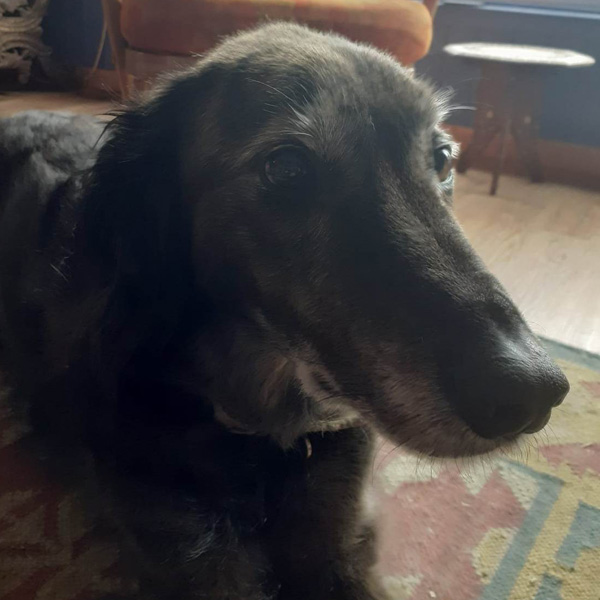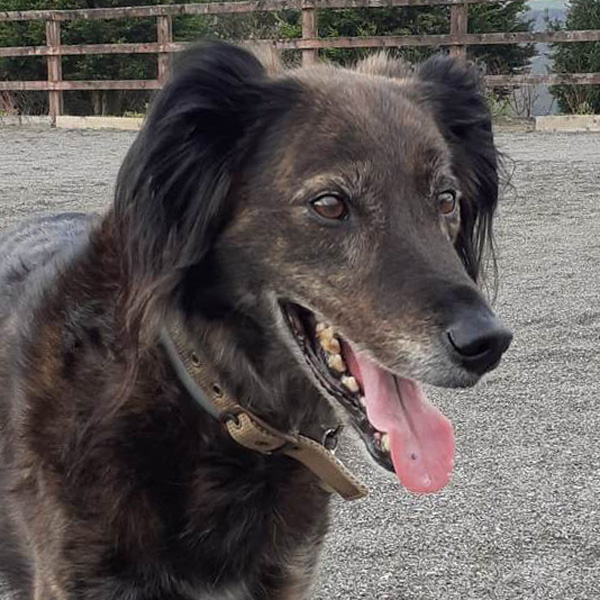Camera
You don’t necessarily need an expensive camera to take great pictures – a compact camera will do as long as it has a good (and clean) lens and gets the focus and exposure right. Use your camera or phone’s highest quality digital setting to help capture maximum detail. However, if you know someone who is a good photographer, it will be well worth buying them a drink or baking them a cake and asking them to take the photos for you. The better the photos you can supply me with, the better the artwork I can create.
Viewpoint
Many compact cameras, phones and tablets have a wide angle lens, which is great for landscapes and so on, but terrible for portraits as it will cause severe distortion as soon as you get reasonably close. Instead of getting right up to your pet, stand further away and zoom in with the lens to fill the frame. This way you also won’t be invading your subject’s personal space, and they will feel more comfortable, and behave more naturally. If using a phone or digital zoom lens, zoom in to around x2 and no more to retain as much image quality as you can. Do not be tempted to use any filters or image adjustments – I need pictorial information which is distorted as little as possible.
Lighting
Contrary to popular belief, the best light for photography is not bright sun, but diffused daylight – the kind you get on a cloudy day but when the light is strong. This means that there is enough light to give highlights and shadows but without the strong contrast you see with sunlight, which can cause detail loss in large areas. If you prefer to take your pictures in sunlight (for example you may have a horse with a shiny coat which looks best in the sun) try to keep the sun more or less behind you, but watch out for your own shadow casting onto your subject. I am not keen on flash photos at all as they flatten the subject out very badly and look unrealistic. If it is absolutely the only way you can get a picture I may not refuse it, but you must be aware that it will detract from the quality of the result.
Background
One thing you definitely don’t need to worry about is the background! It doesn’t matter in the least to me whether there’s a rusty car and a pile of dustbins behind your dog, or a scene of exquisite pastoral beauty; I won’t be painting them anyway (unless you ask me to). Just make sure there isn’t anything in the foreground obscuring your subject when you take the pictures.
Posing Horses
I find there are two types of horse when it comes to portraits: the lively, very aware ones, and the quiet, docile type. The former are much easier as it’s a simple matter to get them looking alert – they will always find something interesting to prick their ears at. They tend not to keep still for long though, so you have to have a quick shutter finger. Quieter horses will generally respond to one of three things: a plastic bag or bright rag being waved around, a bucket of feed being rattled (don’t let the horse eat any till you’ve finished though or s/he will be chewing), or another horse being led nearby. In any case, you are aiming to get the horse’s ears pricked. Horses always look best after a little exercise (not enough to sweat) as their nostrils will be more open, coat will shine a little more and veins close to the skin will be more prominent. Give the coat a light polish with a slightly damp cloth to really bring a shine up, and make sure the eyes and nose are clean. You need two assistants for photographing your horse: one to hold it, one to attract its attention. Take photos from lots of angles, and hold your camera at the height of the horse’s wither. If you want a bare head on the portrait, get the handler to hold the horse by a rope around its neck – headcollars cover too much of the face and bone structure. Otherwise, photograph the horse in a bridle. I don’t charge any extra for painting bridles. Take twenty or thirty shots to make sure you have enough choice.
Posing Dogs
The ease of this will depend on how well trained your dog is! Food is usually the best bribe if your dog isn’t too greedy – you don’t want him/her to be drooling. Otherwise a toy, a whistle or using your voice can produce the required expression of alertness. Avoid telling the dog off if they won’t sit still – they are such expressive animals you will end up with a miserable-looking pooch on your pictures. Squat down to take the photos: you should hold the camera at the dog’s eye level. You need an assistant to attract the dog’s attention in various directions. Much patience is needed with lively dogs, and as always, take plenty of shots. Before you start, make sure the eyes and nose are clean, and decide whether you want the collar on or off.
What to send me
I like to have a selection of photos, even if you think some of them aren’t very good, as it helps me to build up a good impression of my subject. You need to let me know which is your favourite – the main pose you want me to work from; and also tell me something about the personality of my subject. Make notes on any markings which don’t show well on the photos, as well as any that are temporary, like cuts or rubbed patches. Video clips are really useful to me when I haven’t been able to meet the animal, so if you can send me one or two as well it’s a bonus. Please send your original unaltered digital photo files (be aware that some software compresses digital photos when you email them, so it may be better to put them on a memory stick and post it). I work directly from a computer screen so I can pull out as much information as I can from your photos, so there’s no need to send prints of the same images

Poor reference photo
- Taken from too close: distorted
- Shooting towards the light: details lost in shadows
- Unhappy expression on dog’s face

Good reference photo
- Zoomed in slightly: proportions are correct
- Natural daylight: good range of tones
- Dog is relaxed and happy
